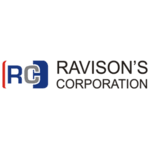Introduction
Statins, a class of lipid-lowering medications, are widely prescribed for the prevention and management of cardiovascular diseases by reducing cholesterol levels. In the U.S., statins play a pivotal role in managing chronic health conditions such as hypercholesterolemia and atherosclerosis, significantly decreasing the risk of heart attacks and strokes. The U.S. Statin Market continues to grow steadily due to the aging population, prevalence of lifestyle-related diseases, and increased awareness about cardiovascular health.
This article explores the key dynamics of the U.S. Statin Market, including its current size, major trends, drivers, challenges, competitive landscape, and future outlook through 2033.
Market Overview
As of 2024, the U.S. statin market was estimated at approximately USD 10.5 billion and is projected to grow to around USD 14.7 billion by 2033, reflecting a compound annual growth rate (CAGR) of 3.8%. Growth in this sector is primarily driven by the high incidence of cardiovascular diseases, ongoing preventative healthcare initiatives, and greater access to generic statin formulations.
Key Market Drivers
-
Rising Prevalence of Cardiovascular Diseases
Cardiovascular disease remains the leading cause of death in the U.S., with millions of adults affected by high cholesterol levels. Statins are a first-line treatment in cholesterol management, directly supporting sustained market demand. -
Aging Population
The growing geriatric population, who are more prone to heart-related conditions, is significantly contributing to increased statin consumption. This demographic trend will continue to fuel long-term market growth. -
Preventive Healthcare Awareness
Increased public awareness of the risks of high cholesterol, combined with regular health checkups and cholesterol screenings, is leading to earlier diagnosis and proactive treatment using statins. -
Generic Drug Availability
The availability of cost-effective generic statins such as atorvastatin, simvastatin, and rosuvastatin has expanded accessibility and affordability, making treatment more widely available to the population. -
Government and Insurance Support
Medicare, Medicaid, and private health insurance plans often cover statins, making them affordable for a wide base of patients. Preventive guidelines from public health bodies also encourage statin use in at-risk groups.
Market Segmentation
-
By Drug Type
-
Atorvastatin
-
Simvastatin
-
Rosuvastatin
-
Pravastatin
-
Lovastatin
-
Fluvastatin
-
Pitavastatin
-
-
By Distribution Channel
-
Hospital Pharmacies
-
Retail Pharmacies
-
Online Pharmacies
-
-
By Application
-
Hypercholesterolemia
-
Cardiovascular Disease Prevention
-
Diabetes Management (secondary use)
-
Stroke Prevention
-
Trends in the U.S. Statin Market
-
Shift Toward Combination Therapies
Pharmaceutical companies are increasingly developing fixed-dose combination therapies that include statins with other cardiovascular agents to enhance treatment efficacy and compliance. -
Focus on Personalized Medicine
Advances in genetic testing are paving the way for personalized statin therapy. Pharmacogenomics helps determine the most effective statin based on individual metabolic responses and genetic markers. -
Digital Health Integration
Integration of digital tools like cholesterol monitoring apps, e-prescriptions, and telemedicine consultations is helping improve adherence to statin therapy and enabling better patient management. -
OTC Statins Debate
There is ongoing discussion about the potential for certain statins to be sold over-the-counter (OTC), which could significantly expand accessibility and increase sales volumes, especially for lower-risk patients.
Challenges
-
Side Effects and Patient Compliance
Muscle pain, liver enzyme abnormalities, and other adverse effects can lead to treatment discontinuation. Non-compliance due to perceived or actual side effects remains a major concern. -
Competition from Alternatives
While statins remain the standard of care, alternative lipid-lowering therapies such as PCSK9 inhibitors, fibrates, and nutraceuticals are gaining popularity among certain patient groups. -
Patent Expirations and Price Pressure
Most branded statins have lost patent protection, leading to a price drop due to generic competition. While this boosts volume, it puts pressure on revenues for original manufacturers. -
Regulatory and Clinical Scrutiny
New safety findings and regulatory reviews can influence public perception and prescribing behavior, particularly in patients with low cardiovascular risk.
Competitive Landscape
The U.S. statin market is highly competitive and includes both branded and generic players. Key pharmaceutical companies operating in this space include:
-
Pfizer Inc. (Lipitor)
-
AstraZeneca (Crestor)
-
Merck & Co., Inc. (Zocor)
-
Teva Pharmaceuticals
-
Mylan (now part of Viatris)
-
Sandoz (a Novartis division)
-
Lupin Pharmaceuticals
-
Dr. Reddy’s Laboratories
These companies are focusing on product differentiation, adherence-support programs, and supply chain optimization to maintain market share.
Future Outlook (2025–2033)
-
Continued dominance of generic statins in prescriptions and insurance reimbursement.
-
Growth in combination therapies to reduce pill burden and improve patient outcomes.
-
Expansion of statin use in diabetic and pre-diabetic patients under updated treatment guidelines.
-
Technological advancements in drug delivery systems for sustained-release statin formulations.
-
Rising partnerships between pharmaceutical firms and digital health platforms for remote cholesterol monitoring.
Source: https://www.databridgemarketresearch.com/reports/us-statin-market
Conclusion
The U.S. statin market is mature but remains a vital part of the nation’s cardiovascular disease prevention strategy. With a strong foundation in primary care and preventive medicine, ongoing innovation in combination therapies, and a focus on improved patient compliance, statins will continue to play a central role in American healthcare. While challenges persist, especially around side effects and pricing, the market outlook remains robust through 2033, driven by medical necessity and an aging population.










Leave a comment